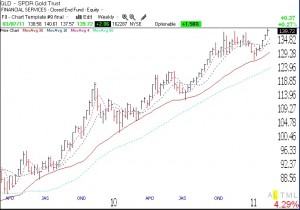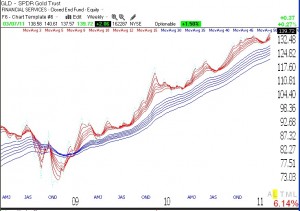According to the way I define it, the QQQQ short term down-trend completed its second day (D-2) on Wednesday. I will be more confident of the new down-trend if it persists for 5 days. The longer term trend is still up, but there has been a lot of back and forth around the 30 day average. The QQQQ appears to be finding support around its 50 day average, now at 56.86. A close below this important average would signal important short term weakness in tech and growth stocks. IBD already considers the market to be in a correction and cautions readers against making new buys right now. With stock index futures well under fair value this morning, it looks like we may get a test of critical technical support on Thursday. While I remain fully invested in mutual funds in my university pension, I am largely in cash and in a little gold (DGP) in my IRA account.
A number of people have asked me what stocks I monitor for an indication of how the market leaders are doing. They are: PCLN,AZO,AAPL,BIDU,CMG,AMZN,GOOG,NFLX,FFIV. The last 4 are showing weakness, closing below their 10 week averages. I am cautious now, given the signs of short term weakness in the leaders and in my other indicators.

